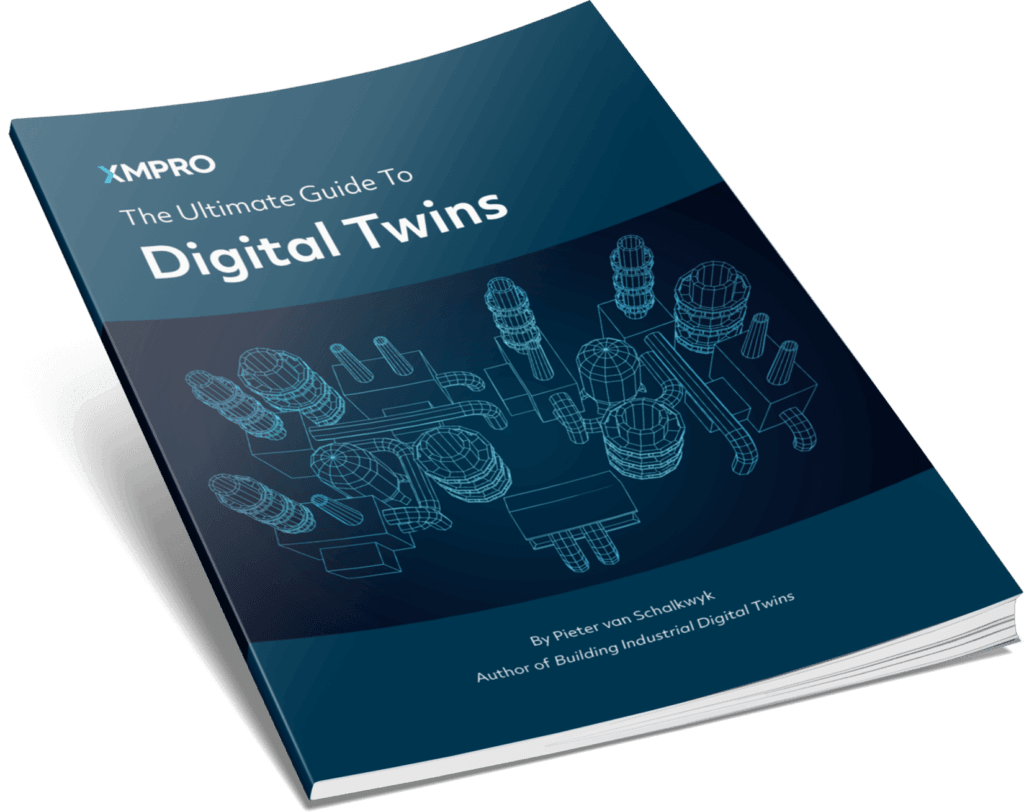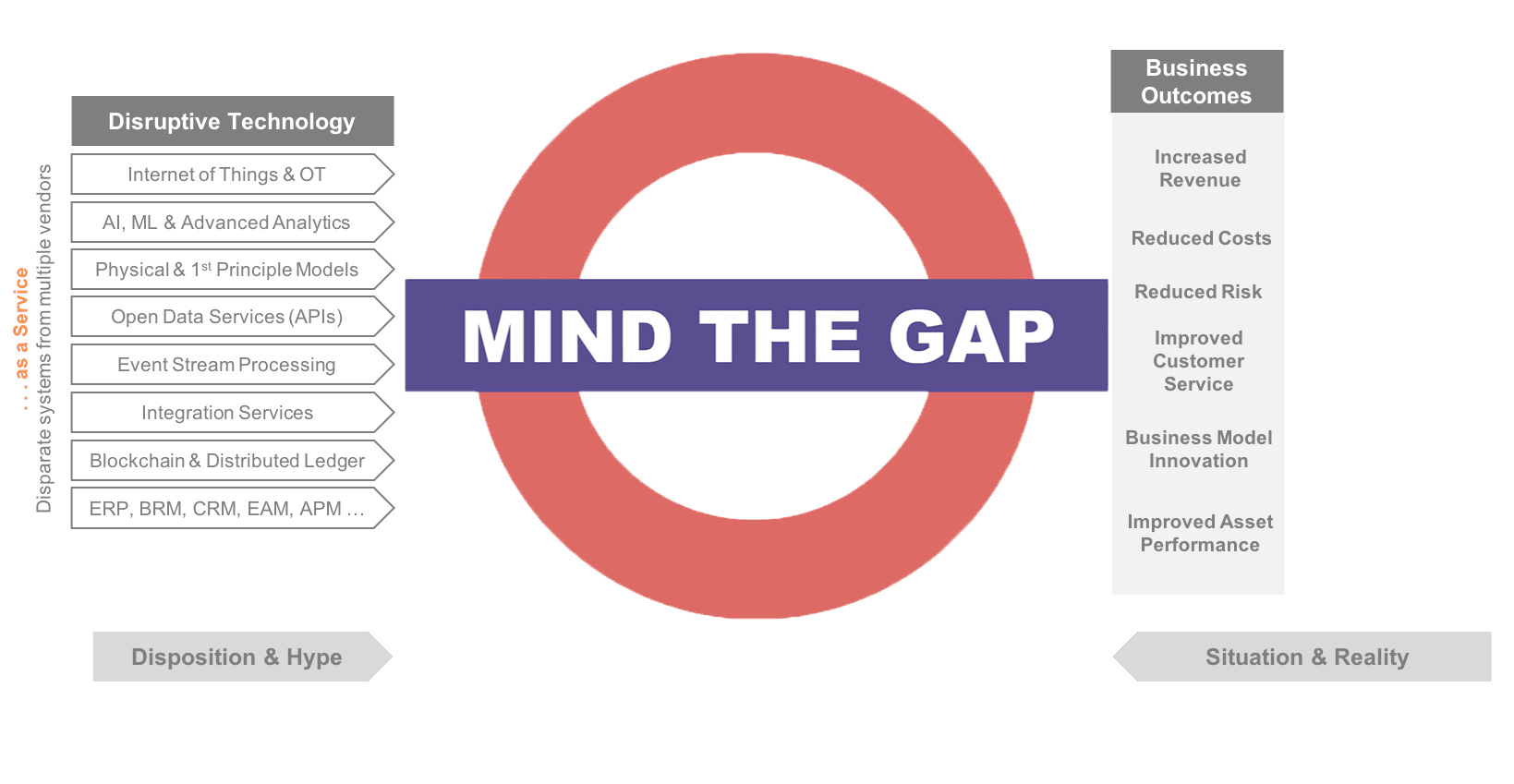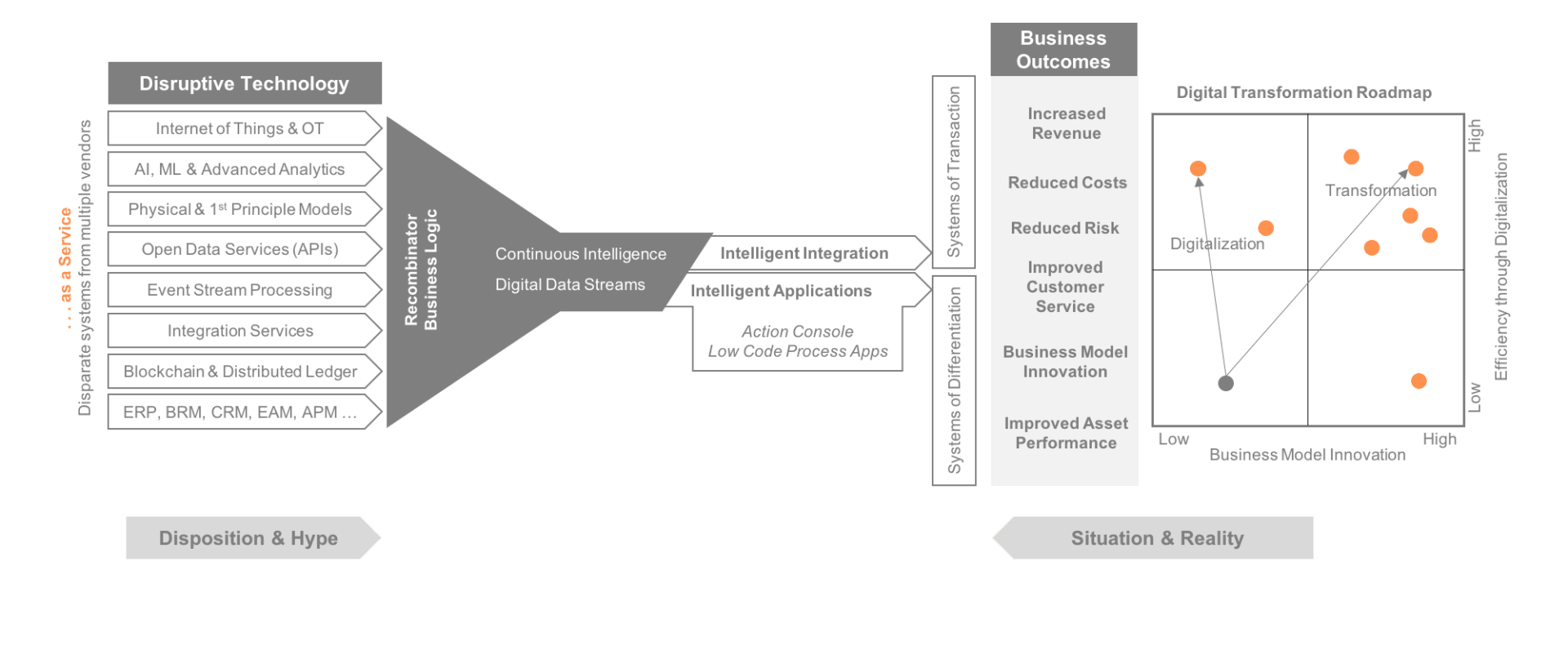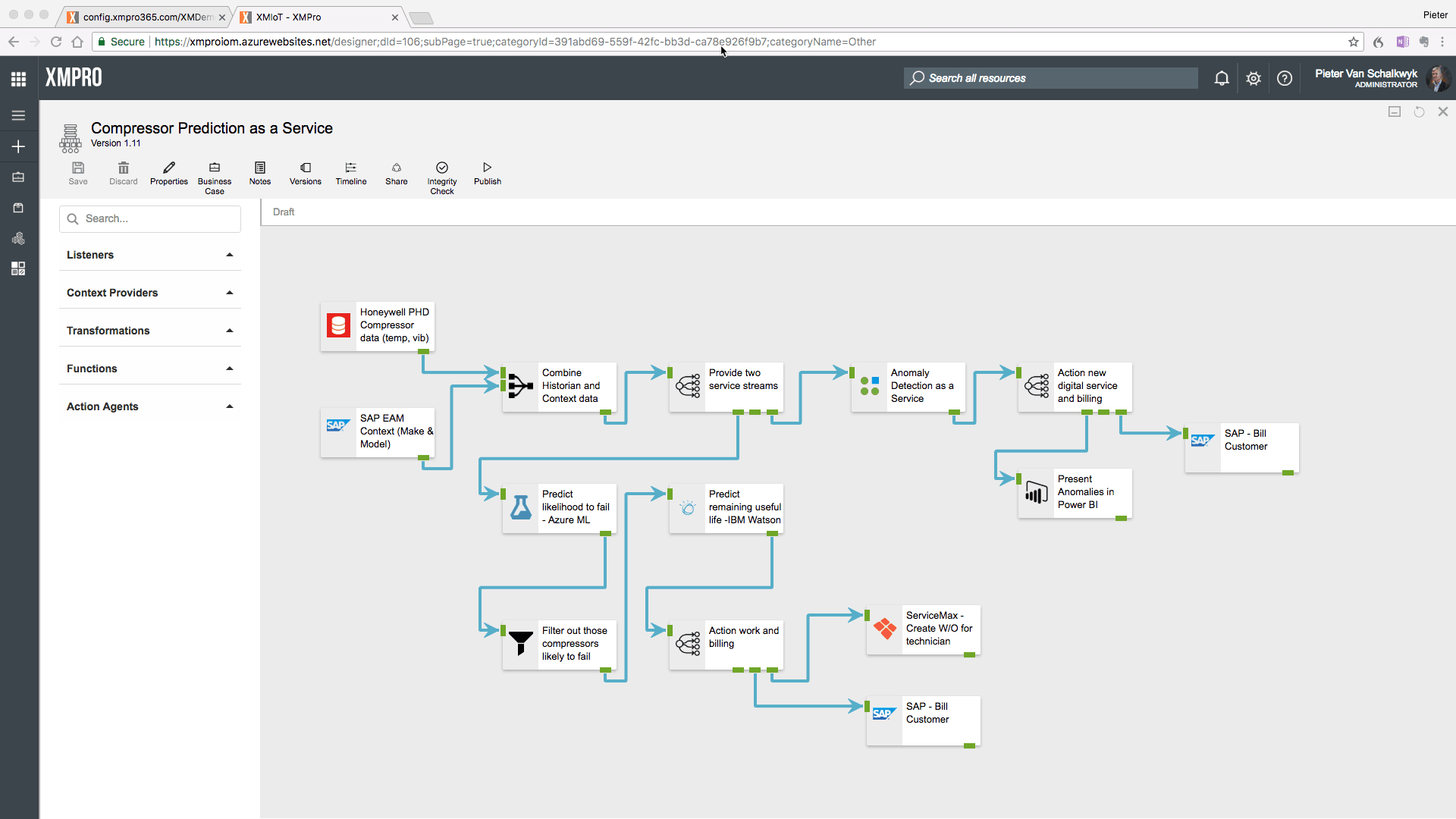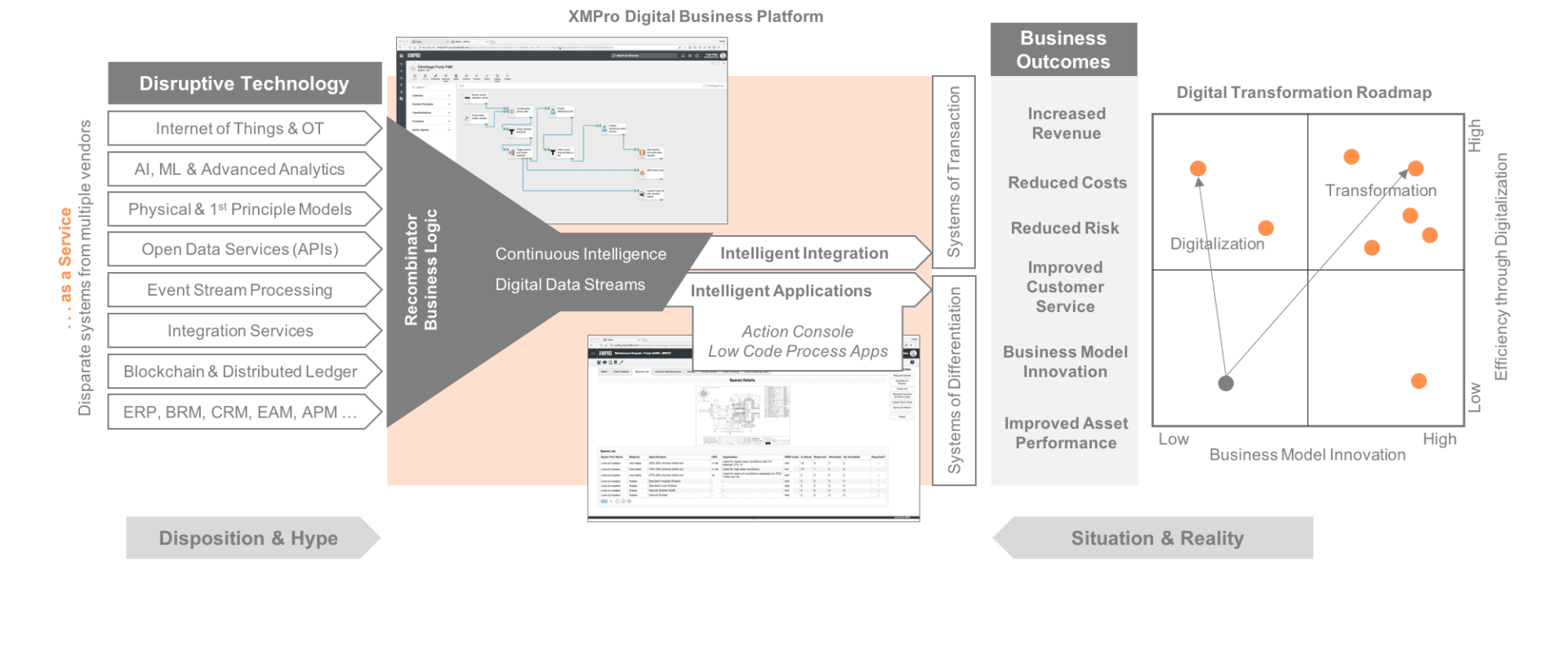C-Level executives are under pressure to have their organizations remain competitive, profitable, retain customers and grow. Never before have we seen all the forces at work at the same time and at the scale as is currently the case. Digitalization and disruption are occurring in almost every industry. The forces I am referring to are Michael Porter’s Five Forces Framework that was first published in the Harvard Business Review in 1979. It is as if all five forces are converging and accelerating the impact on existing businesses. It is an attack of inter-galactic proportion.
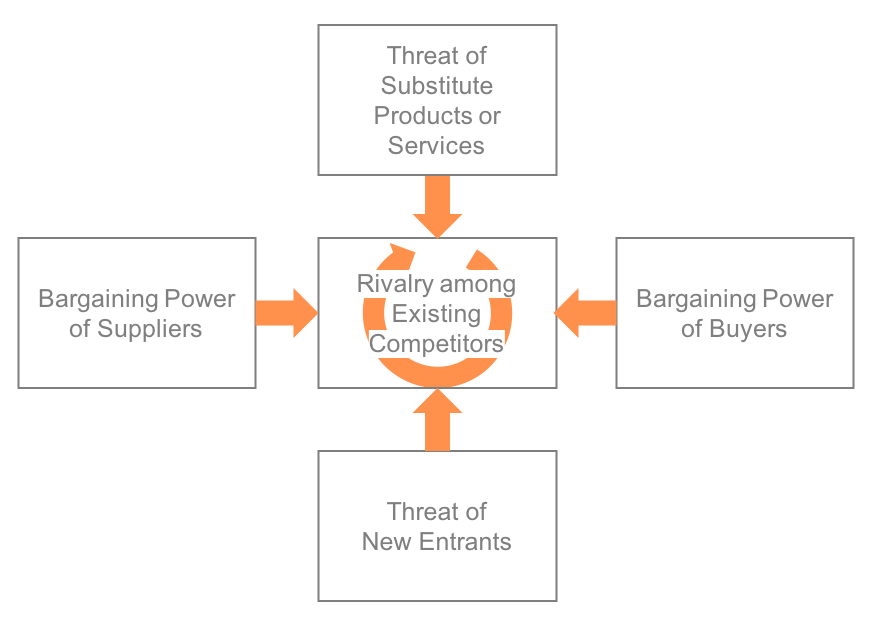 Not only is digitalization empowering customers and suppliers to negotiate terms and prices, but the barriers to entry for new competitors are lowered significantly through technology and digital infrastructure such as cloud and mobile computing.
Not only is digitalization empowering customers and suppliers to negotiate terms and prices, but the barriers to entry for new competitors are lowered significantly through technology and digital infrastructure such as cloud and mobile computing.
Substitute products, through digitalization, are creating new revenue opportunities for competitors who are adapting their business and operating models. Competitors, suppliers and customers are all digitally transforming how value is created, delivered and captured.
Many of the new digitalization capability is delivered through disruptive technology such as IoT, AI, 3D printing and many others that can be easily consumed “as a Service”. There are a large number of incumbent technology providers competing with innovative start-ups. This ends up creating a smorgasbord of disparate systems that all provide a piece of the puzzle in an increasingly complex digitalization effort.
CXO’s are trying to avoid the hype of the next shiny object, but some of these disruptive technologies are impacting their ability to remain competitive. Irrespective of their disposition towards these new technologies (whether they like it or hate it), the reality of their situation is that it impacts the business outcomes in either a positive of negative way. The challenge is that there is a significant gap in going from disruptive technology to positive business outcomes. Navigating this gap is a critical success factor in effective Digital Transformation.
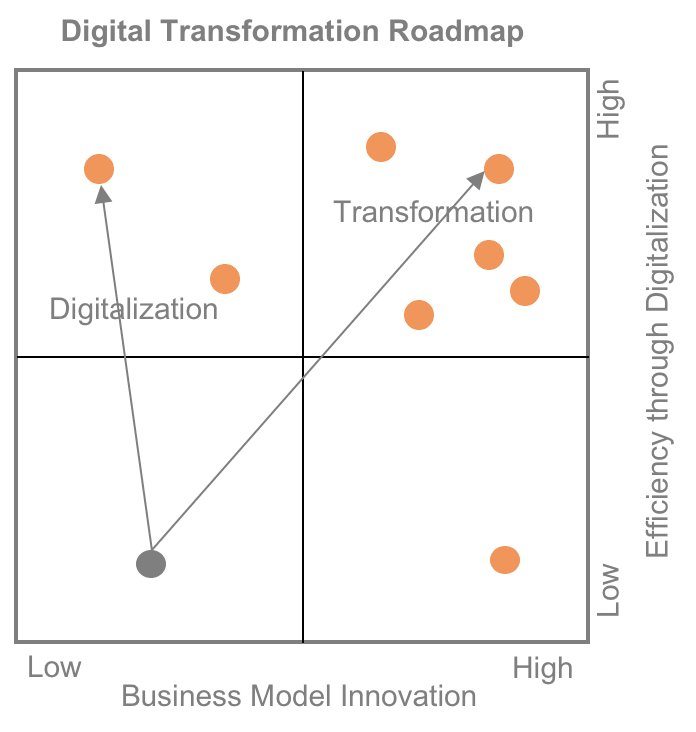 There are fundamental differences between Digitalization and Digital Transformation that I describe in more detail here, but the four quadrants of this Digital Transformation Roadmap explain it at a high level.
There are fundamental differences between Digitalization and Digital Transformation that I describe in more detail here, but the four quadrants of this Digital Transformation Roadmap explain it at a high level.
Organizations can digitize business processes without changing business models and this most often brings efficiency gains. It doesn’t improve the organization’s competitive position, but it does lead to cost reduction, improved asset performance and other efficiency gains.
Real Digital Transformation happens when new operating or business models are enabled through disruptive, digital technology. Businesses are then transformed with new products and services that bring new revenue lines, new customers and new competitive advantages to disrupt markets. These are the real objectives of CXOs that are looking to close the gap between the opportunity of disruptive technology and the promise of new/more revenue, lower cost, lower risk and increased valuations due to successfully transforming their organizations. The challenge for CXOs is to find a balance between the hype and their unique situation.
So how do you navigate your enterprise through the hype of emerging and disruptive technology as you transform it to remain competitive? Do you avoid or discard these new technologies and keep your troglodyte blinkers on and hope competitors don’t realize? Or do you throw caution to the wind and buy one of each new technology that appears on the Hype Cycle every year?
The answer lies in looking at each Digital Transformation opportunity or initiative (the orange dots in the quadrants) and identifying which recombination of the different technologies will provide the desired business outcome. It is a process of Digital Business Process Reengineering (Digital BPR) that evaluates each use case and recombines the right disruptive technologies to provide an outcome where the impact of the new Digital Business Process is greater than the sum of the parts.
Recombination, instead of simple integration, is a powerful mechanism to leapfrog innovation cycles and create new digital assets that will increase the valuation of an organization the same way Netflix’s Recommendation Engine adds more than $1 billion in value per year. I explain more on the power of recombination in this article. Recombinant innovation refers to the way that existing ideas can be reconfigured in new ways to make new ideas. It is similar to the way an agricultural research station develops improved plant varieties by cross-pollinating existing varieties. It means you don’t have to invent new technologies and processes, but recombine what you have and what is available to produce new ways to create, deliver and capture value in a digital business model.
As a CXO, you should be thinking about how you can harness the power of these disruptive technologies at the right time and place. How can you funnel the right technologies such as AI and IoT into a “Recombinator” with the right business logic to create digital data streams that deliver the right real-time, Continuous Intelligence for each Digital Transformation initiative? How do you intelligently integrate this into existing transactional and operational business systems and how do you create intelligent applications to support new business models and digital transformation?
This recombination of different, disparate, “… as a Service” technologies is a key capability of the XMPro Digital Business Platform. It separates the business logic for business outcomes in new Digital Business Processes from the underlying technologies that supports it. It blends disruptive new technologies in the right formulation with existing business systems to create new continuous intelligence for real-time business processes and operations. It enables new operating and business models and a visual way of wiring the Digital Enterprise.
XMPro’s Digital Business Platform (DBP) is a recombination, through intelligent integration and orchestration, of different digitalization technologies in a single solution(or solution stack) that enables you to create new business capabilities. It turns technology into key business capabilities for Digital Transformation. It provides continuous intelligence from digital data streams for Intelligent Digital Apps. These apps recombine existing or emerging business technologies with new digital business processes to support the desired business outcomes.
XMPro’s digital business processes provide the necessary orchestration to place the right intelligence at the right point in the value chain. Intelligence, such as AI and Advanced Analytics, can be at the edge, the cloud or any point in between where it best addresses the requirement of the digital business process.
XMPro’s DBP supports the full lifecycle of discovery, testing, fine-tuning and the continuous improvement of business and operating models as CXOs embark on the journey from the current “As Is” business state to an enterprise that is digitally transformed, competitive and disruptive in its chosen markets.
Let us show you how to create the new digital nervous system to power new products and services, improve customer service, reduce risk and cost and be the disruptor that your competitors fear.
May the five forces be with you!
















